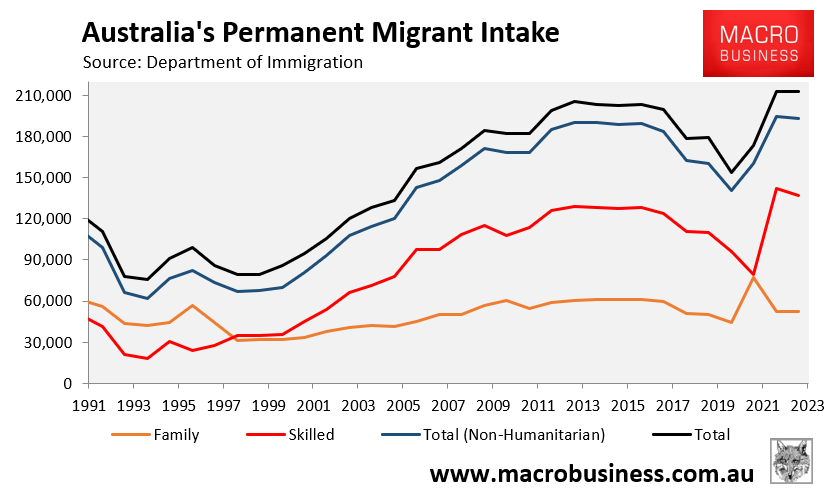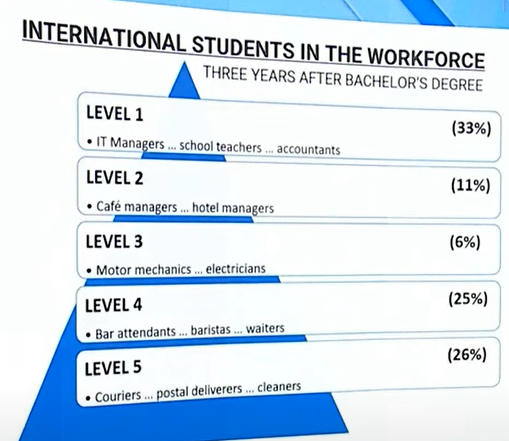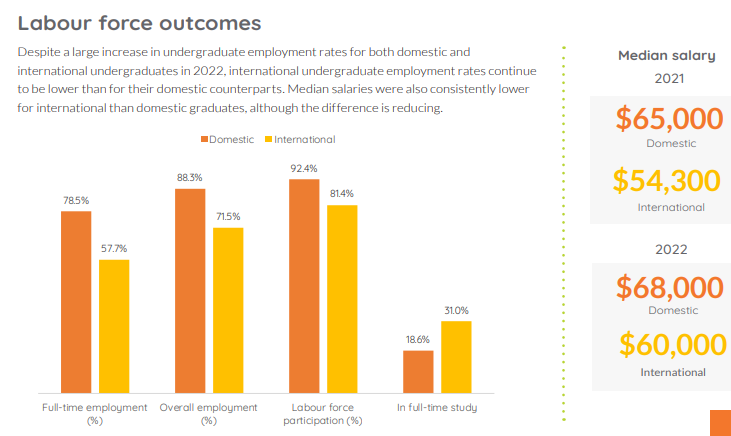Last week, KPMG chief economist Brendan Rynne claimed that a “short-sighted”, “kneejerk” cut to immigration in an attempt to address Australia’s housing crisis would damage productivity and the economy.
Below is a detailed interview with Radio 2GB’s Luke Grant, which comprehensively demolishes Rynne’s claims.
I also explain in detail how Australia’s international student ‘Ponzi scheme’ has delivered a low-paid, low-productivity migrant underclass, with more than half of international student graduates working in low-skilled jobs.
Below are key extracts from the interview.
Edited Transcript
Regarding Brendan Rynne’s claims:
What Rynne said was that we can’t have any cuts to immigration because if we do so, that’s going to wreck Australia’s productivity and then lower per capita growth. And then that will lower wages ultimately.
But the whole thing is that his comments don’t match the empirical evidence that we’ve experienced over the past 20 years now.

All the listeners probably know we massively ramped up immigration in the mid 2000s. We more than doubled it. And most of those are supposedly skilled migrants.

We run this so-called skilled migration system, but what we’ve actually experienced over the past 20 odd years is a collapse in Australia’s productivity, the worst per capita GDP growth in decades, and obviously we’ve had the poorest real wage growth and income gains.
So, the empirical evidence is that we did exactly what he wants, which is ramp up immigration and everything got worse. And all this tells you is that his claims aren’t worth a pinch of salt. And they’re actually wrong and in fact one of the reasons why we’ve had such poor productivity and such poor outcomes is because we ramped up immigration so viciously.
What that did was it effectively meant that the growth in the population was a lot faster than the growth in business investment, housing, infrastructure, all those sorts of things.
And what that basically means is the economy has gotten what is called “capital shallowing”, which basically means we’ve got less capital stock per person.

Source: Gerard Minack
What that does is that ends up destroying productivity. And effectively, the solution is to do the exact opposite of what Brendan Rynne said. That is, make the system smaller but actually more highly skilled rather than what we’ve done, which is call it a skilled migration system that’s not and just basically make it volume based rather than quality based.
If you’re a Sydneysider, you’ve experienced this first hand. I mean nobody would argue that the growth in the stock of infrastructure has kept up with population growth, or the growth in housing or the growth in water supplies, all those sorts of things.
If they don’t keep up basically you get lower living standards. And you end up with lower productivity. And that’s effectively what Australia’s whole growth model has been for the past 20 odd years. It’s just basically bringing massive volumes of people and that grows the overall economy in terms of GDP.
But everyone’s slice the pie doesn’t grow as fast and once you factor in the broader living standard issues like traffic congestion and having to live in a high-rise apartment instead of a house, and those sorts of things, quality of life actually has fallen.
It’s pretty obvious that’s the empirical evidence and everyone has lived it, especially if you live in Sydney and Melbourne.
So, for Brendan Rynne to come out and claim the opposite – that it’s actually good for us – is complete gaslighting, especially when we’ve got the worst housing crisis in generations and people basically living in their cars and in tents.
Regarding the international student ponzi:


Source: Graduate Outcomes Survey
Universities are effectively the middle man to Australia’s migration system. And we’ve got to bear in mind that the universities here are untaxed. They are not for profits. But they are run like private corporations in a sense that they’re headed by million dollar vice chancellors and an army of highly paid administrators whose sole purpose is basically to pump through as much volume as possible for maximum revenue.
They are the ones who are effectively creaming this, but the costs are pushed on to everyone else.
For example, the universities don’t provide enough student accommodation. So, most of these students end up in the private rental market, which is one of the reasons we’ve got a rental crisis.
They obviously create stresses for infrastructure and all these other things.
So effectively, the universities are privatising the gains from immigration while the cost are being socialised on the rest of us.
The numbers are just way too high and we need to basically have a much lower number of very highly skilled genuine students who would boost productivity and would end up graduating into high paid jobs and high skill jobs.
Rather than just going for maximum volume, which has been the Australian approach for nearly two decades.
The university sector should also be made responsible for housing these international students.

